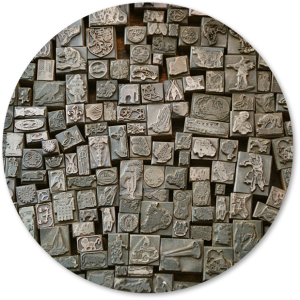The “Next Big Thing” series: Discussing The Thing
Opening chapter No. 6 of the “Next Big Thing” blog post series by discussing the Internet of Things!
What’s essentially so entirely new about the Internet of Things? Things are not. Connectivity and protocols might be – but not entirely. Mastering the data produced by things – well: we’ve discussed that bit in one of the earlier posts of this series.
What’s really entirely new is the speed of adoption that the topic now reaches; and this speed is based on the possibilities that technology innovation have begun to offer to new things-based ecosystems.
In order to understand that, one has to judge the elements of a things-based architecture. While the article “Understanding the IoT Landscape” offers a quite comprehensive simplified IoT architecture, I would tend to be a little more detailed in assessing the elements of a functioning IoT ecosystem:

- The Thing itself. The variety of what a “Thing” may be is vast: medical human wearable monitoring devices (e.g. heart monitor), medical measurement devices (such as a diabetes meter), sensors, transmitters and alert devices in automated cars, smart home automation sensors, fitness wearables or simply watches that take over several of the above capabilities at once, … and many more things that aren’t even invented or thought of yet (the aforementioned article gives a decent list of what Things could possibly be). Discussing implementation architectures for the Thing itself would exceed the scope of this article by far, obviously.
- The Thing’s UI: This is already an interestingly ambiguous architecture element. Do Things have UIs? Yes, they do. Sometimes only comprised of one or a few LEDs or the-like of it. They could, of course, also have none at all if in case interfacing with a Thing’s user is delegated to either a mobile phone or a gateway which the Thing is connected to.
- Thing Connectivity and Communication Layer: The purpose of which is solely to bridge the gap between the Thing itself and the first connectivity point capable of transferring data through well-established protocols. Thing Connectivity may sometimes be reached through WiFi but often also by just using Bluetooth or any other wireless near field communication protocols.
- Thing Gateway: Rarely will Things directly feed data into any backend analytics or application layer; simply because it is too costly and complicated to accomplishing high performant, secure and reliable data connection based on proprietary protocols over long connectivity routes. Hence, we’ll often see some kind of gateway being introduced with the Thing which in simple cases could just be a mobile phone.
- Data Store: By whatever way Things might be leveraged by the business’s backend IT, we will always see a data collection and storage layer introduced to directly capture and provide Thing data for further compute, analysis and application integration.
- Application Integration: One essential topic to consider when introducing Things into business models is to envision an application landscape around the Thing in order to offer app-based Thing interaction to the end consumer as well as information from Things and their usage to the Thing’s business plus to third-party consumers in order to drive cross-business integration. New cross-enterprise business models will evolve anyway – the better Things-centered businesses allow for integration and orchestration, the better they will be able to leverage and let others leverage their disruptive innovations.
- Analytics: No Thing-based business – no Things introduction – will make any sense without creating the ability to leverage the information produced for analysis and even more for prediction or even prescription. We will see more of that in the next section of the article.
The impact to IT when discussing the change through IoT cannot be overestimated. Just by assessing the layers described above it does become obvious that we will see quite a lot of new architectural approaches evolve which in turn need to be integrated with existing IT landscapes. Also – as with all the more recent disruptions in enterprise IT – the orchestration of different services maturing in the “Things” space will be key for IT organizations to offer utmost business value when leveraging the Internet of Things.
{No. 7 of this blog post series will cover “Digitalization” and “Digital Transformation” – and what it really means to any business}
{feature image borrowed from the IoT wikipedia article}




